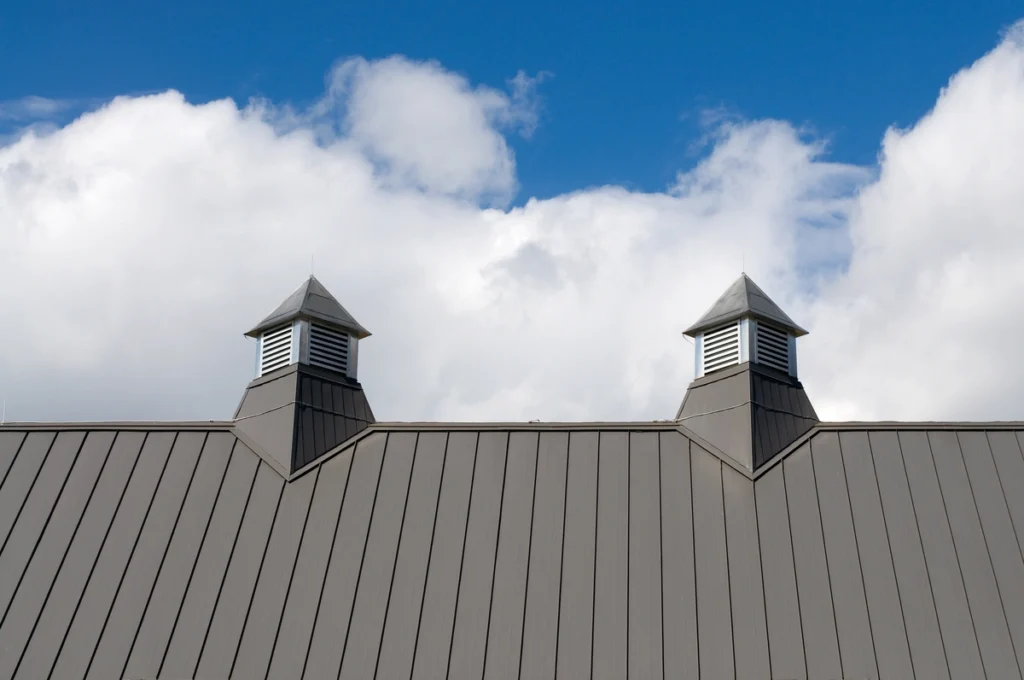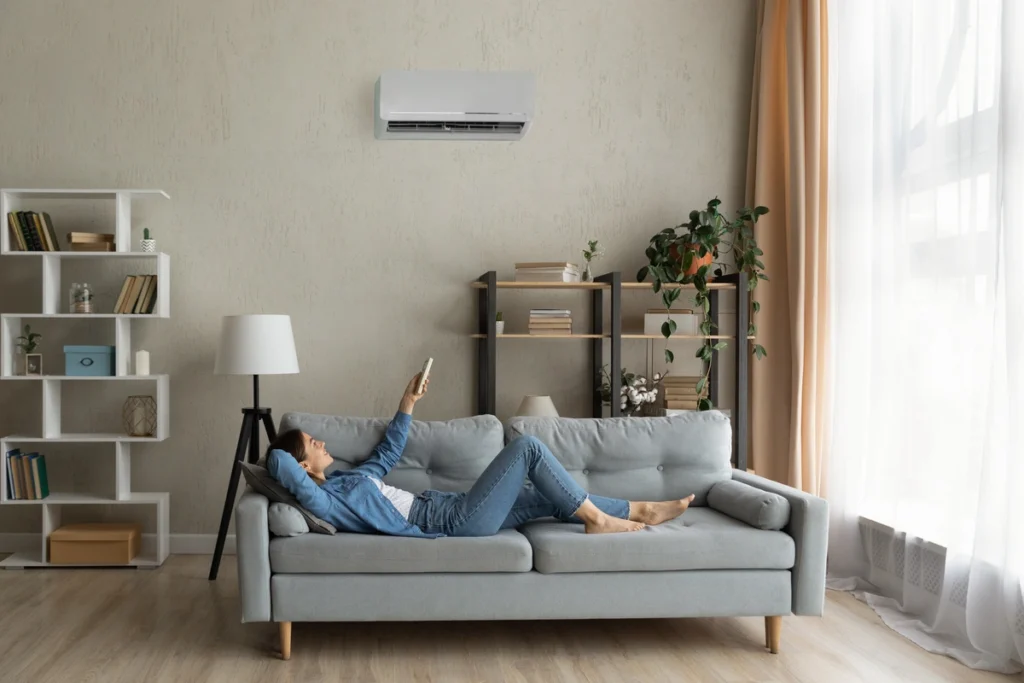5 Best Roof Vent Types for 2024
December 12, 2023
Roof vents play a crucial role in regulating temperature and moisture levels in your attic, which can affect your home’s energy efficiency and structural integrity. Your roof needs proper ventilation to maintain its health and longevity.
In this homeowner’s guide, we’ll explore the five best roof vent types for 2024, helping you make informed decisions about your roof’s ventilation needs.
In need of quality roofing solutions for your roof and vents?
Here’s what you’ll find in this easy read:
- Benefits of proper roof ventilation
- The top 5 types of roof vents for 2024
- How to choose the right kind of roof vent for your home
Keep reading to figure out which roof vent type is right for you!
Why Roof Ventilation Matters

Before we dive into the best roof vent types, let’s understand why roof ventilation is essential:
Roof vents help balance attic temperatures, preventing excessive heat buildup in summer and minimizing condensation in winter. They do this by mitigating heat dissipation, controlling moisture buildup, and providing better air circulation.
Heat Dissipation
During the hotter months, temps can get out of hand, especially in an older home with less airflow. Roof vents facilitate the release of hot air that accumulates in the attic or upper parts of your roof and home. Not only does this help prevent the buildup of excessive heat, reducing the overall temperature inside the building, but it also helps keep your roof dry.
Moisture Control
We all know that heat and humidity can be a pain, but it’s not just on our hair or comfort. It can also drastically affect your roofing system. That’s why proper ventilation with the right roof vent is crucial.
Roof vents are a key factor in maintaining a more comfortable home with increased air quality since they allow humid, moisture-laden air to escape. This in turn ensures a longer-lasting roof structure because humidity and condensation could otherwise lead to mold growth or worse—rot.
Air Circulation
If you’ve ever noticed your home has a tendency to get a little stuffy, it could be a ventilation issue. Home and roof vents can provide some much-needed circulation to get airflow moving.
Working in conjunction with other ventilation elements, such as soffit vents and gable vents, roof vents create a flow of air within the building. This can in turn cool things down and for sure maintain a more consistent temperature — preventing those stagnant air pockets and improving the overall energy efficiency in your home.
Energy Efficiency

In climates with both hot and cold seasons, roof vents can help maintain an equilibrium in your home regarding moisture, temperature, and airflow. We already mentioned that this is crucial for a healthy, well-maintained roofing system, but a well-ventilated attic can also seriously lower your energy bills by reducing the workload on your HVAC system.
Think about a reality where you don’t need to rely so heavily on your air conditioning or furnace. Sounds pretty great, right?
Roof Longevity
As mentioned, adequate ventilation can seriously extend the lifespan of your roof, but here’s a list to summarize how exactly roof vents keep your roof healthy:
- Reduce the risk of shingle damage and structural issues.
- Reduce the risk of mold or rot.
- Increase airflow.
- Maintains more consistent temperatures inside your home.
- Reduces energy costs.
Now, let’s explore the top 5 roof vent types for 2024:
1. Ridge Vents
Ridge vents are installed along the peak (ridge) of your roof. They run the entire length of the ridge and are typically covered with shingles, making them less visible.
- Benefits 👍: Roof ridge vents provide continuous ventilation and are highly effective at preventing hot air buildup in the attic. They create a uniform airflow along the entire roof.
- Considerations 🤔: Proper installation is crucial for a ridge vent to function effectively. It’s essential to have an intake vent, such as soffit vents, to ensure balanced airflow.
2. Soffit Vents

Soffit vents are located under the eaves of your roof, typically in the form of perforated panels. They allow fresh air to enter the attic.
- Benefits 👍: Soffit vents provide intake airflow, allowing cool air to enter the attic while expelling hot air through the exhaust vents (like ridge vents or roof vents).
- Considerations 🤔: Proper spacing and coverage of soffit vents are essential to ensure adequate intake airflow.
3. Roof Louvers or Box Vents
Roof louvers, also known as box vents, are static vents installed on the roof’s surface. They allow hot air to escape from the attic.
- Benefits 👍: Roof louvers are simple and cost-effective. They require no moving parts or electricity and can effectively exhaust hot air.
- Considerations 🤔: The number and placement of roof louvers should be carefully planned to ensure proper ventilation.
4. Power Roof Vents
Power roof vents, or attic fans, are electrically powered exhaust fans installed on the roof. They actively pull hot air out from the attic.
- Benefits 👍: Power vents can quickly and efficiently remove hot air, making them suitable for areas with high temperatures or poor natural ventilation.
- Considerations 🤔: These vents require electricity to operate, and their installation should be done by a professional roofing contractor to ensure proper air flow.
5. Solar-Powered Roof Vents

Solar-powered roof vents are similar to power roof vents but are equipped with solar panels that generate electricity to power the fan.
- Benefits 👍: Solar-powered vents are energy-efficient and eco-friendly. They operate silently and can reduce your electricity consumption.
- Considerations 🤔: While they are energy-efficient, their initial cost may be higher than traditional roof vents.
Choosing the Right Roof Vent
- Evaluate Your Attic: Assess your attic space size, configuration, and existing roof ventilation system to determine your needs.
- Consult a Professional: Seek advice from a roofing professional to ensure you choose the right vent type and installation method.
- Consider Climate: The climate in your region may influence your choice. For hot climates, powered vents may be more effective, while passive vents are suitable for milder climates.
- Balanced Ventilation: Ensure a balance between intake (like soffit vents) and exhaust vents (such as ridge vents or roof louvers) to maintain proper airflow.
- Solar-Powered Options: If you’re eco-conscious and want to save on electricity bills, consider solar-powered roof vents.
Breathe Easy with the Right Roof Vent 🌬️
Choosing the best roof vent for your home in 2024 can significantly impact your comfort, energy efficiency, and roof longevity. Proper ventilation helps regulate temperature and moisture levels, preventing costly issues down the road.
Whether you opt for ridge vents, soffit vents, roof louvers, power roof vents, or solar-powered options, consult a roofing professional to ensure your choice aligns with your attic’s specific needs. With the right roof ventilation, you’ll breathe easy, knowing your home is well-protected from the elements.
Get in touch with our X’pert roofing team at Roof X today for all your roofing needs.
We’ll make sure your home is in top-notch shape with a solid roof over your head. Let’s get the ball rollin’ on your next roofing project!




